Yellow chrysanthemums: description of varieties and agricultural technology

The southern visitor has taken root very well in our climatic conditions. Blooming profusely from mid-summer to mid-autumn, it is very unpretentious and forgives the mistakes of novice gardeners. In their decorativeness and popularity, yellow chrysanthemums compete with many other garden flowers.
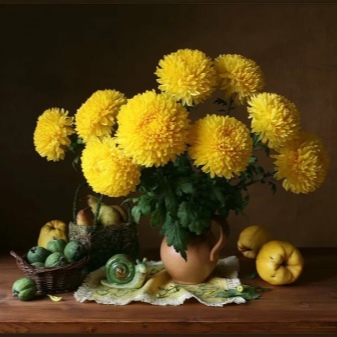
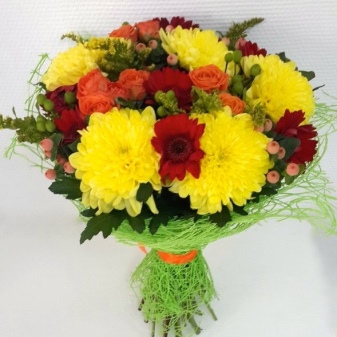
Popular varieties
Positive, giving a sunny mood and warmth, it will decorate your site with rainbow spots and will perfectly combine with a variety of flowering plants and decorative leaves, conifers, fruit trees and even vegetables.
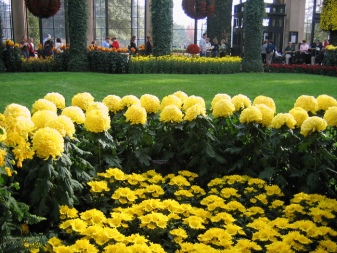

The yellow chrysanthemum has an incredible number of varieties. However, they do not really differ from each other. The main external decorative differences are the size of the inflorescences, the shape of the leaves and the varying degrees of color saturation.
"Magnum yellow"
The name of the flower comes from the Latin magnus, which means "big", "great". The name corresponds to reality. The flower is really large and tall. The stems can reach a meter in length, and the size of the inflorescence is at least 20 cm. This is a very bright, terry representative of yellow chrysanthemums. Its petals are densely planted and have the shape of a hemisphere.
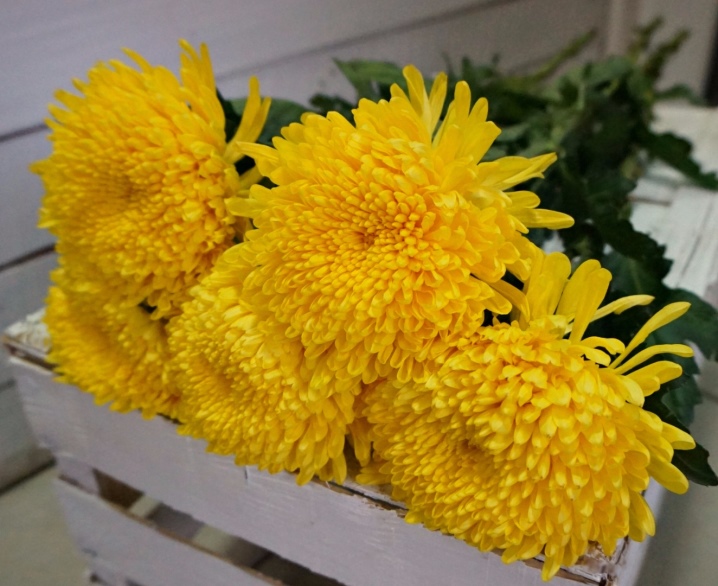
"Pompon"
The artificially bred variety includes several subspecies, which differ in size, flowering periods, the shape of the inflorescences and the color of the petals. Unpretentious type of plant, tolerates wintering without shelter.
Depending on the variety, the flower grows from 30 cm to 100 cm. Inflorescences are in the form of baskets, there are both singly planted and collected in a sparse bouquet. The flowering season starts in July and lasts until September.
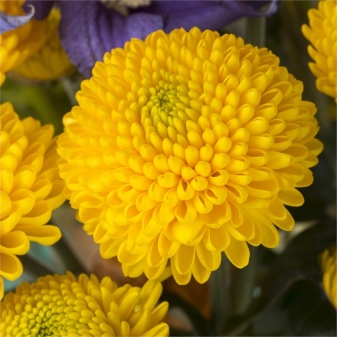
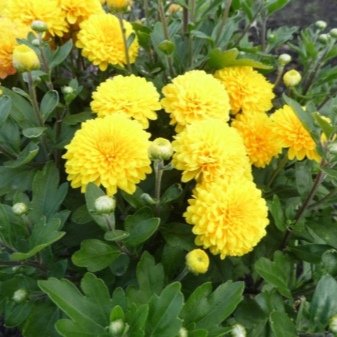
It is recommended to transplant the plant once every 2-3 years.
"Joy"
Korean variety of chrysanthemum, has the shape of a bush with cream-colored flowers, belongs to semi-double, medium-flowered, perennial varieties. The shape of the chrysanthemum "Joy" flower outwardly resembles a chamomile: a yellow or green core and yellow identical petals located around it. More than 10 densely planted inflorescences gather on one stem. The size of each flower reaches 8 cm.
The green part of the plant has a rich deep color with an emerald hue. "Joy" is a hybrid variety, bred for interior decoration, decoration of festive events and the formation of bouquets. It can be used both in composition with other colors, and independently. When cut, the flower can stand in a vase for up to 2 weeks.
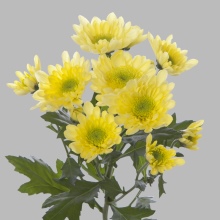

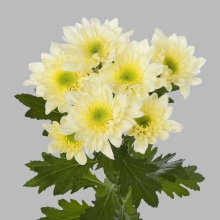
"Pinacolada Elo"
This variety was brought from Holland. The plant is strong, densely covered with foliage, has elastic, even stems. Its leaves are pinnately dissected, colored emerald green.
Inflorescences of "PinaColada" have the shape of a basket with a yellow-green core. Delicate yellow petals, having a regular spoon-shaped shape, frame the core in three rows.
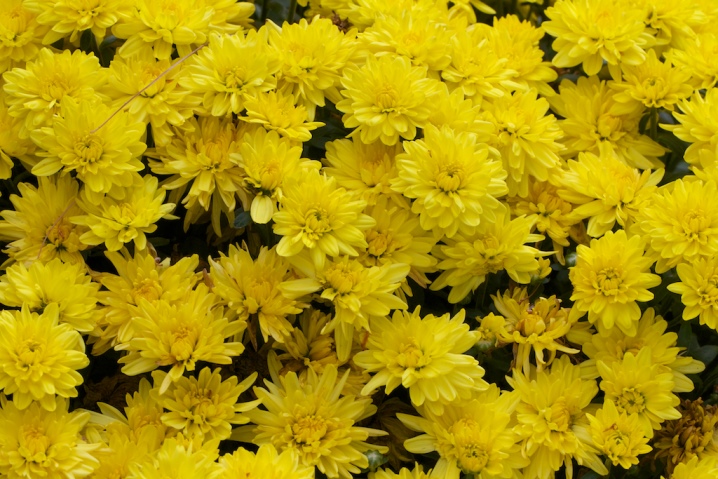
Celebrate
A variant of the Dutch selection, which appeared in our country quite recently. They are powerful tall plants, reaching 60–80 cm in height, with fleshy stems and dark colored leaves. The flowers are bright yellow, collected in small inflorescences, large, resembling a double chamomile. They differ from their counterparts in the depth and brightness of the shade.

Reagan
Owner of large, up to 7 cm in diameter, light and pale yellow flowers with a yellow-green core. It is a Korean plant that has the shape of a short bush.
The flowering period lasts from August to September.
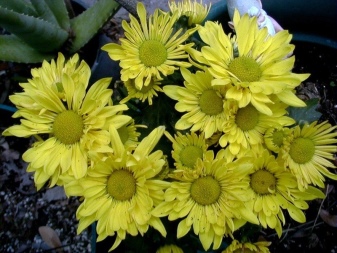
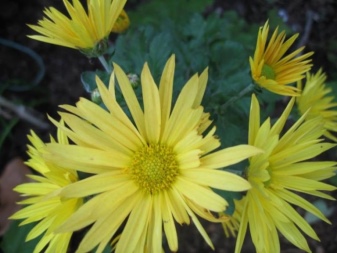
"Wild honey"
Refers to medium-sized varieties of chrysanthemum. Like most species of this plant, "Wild Honey" is imported from Korea. Needle flowers, reaching 7 cm in diameter, are arranged in several rows around an orange fluffy semi-double core. The flowering season lasts from August to September.
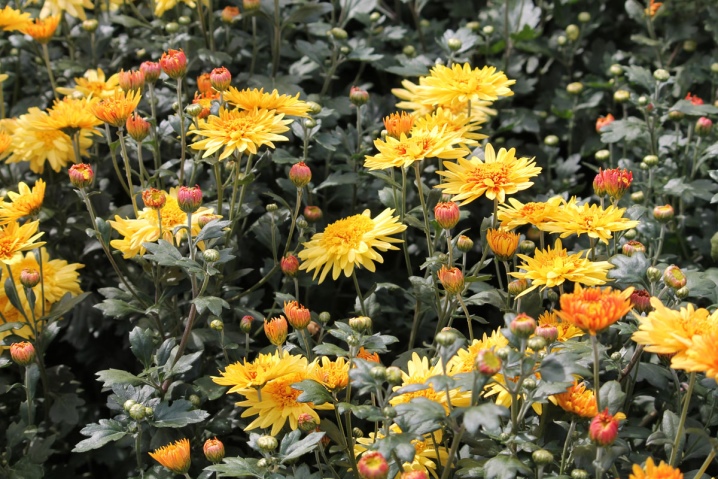
"Peony yellow"
Large-flowered chrysanthemum with light yellow flowers. The height of the shrub reaches 70 cm. One of the traditional unpretentious and favorite types of gardeners.
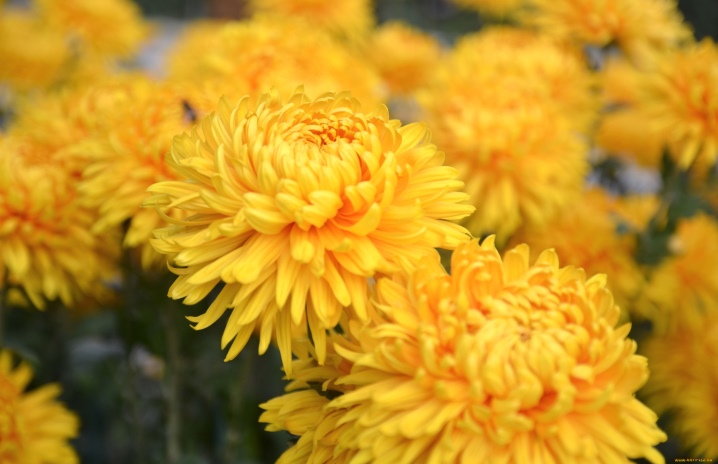
"Mishal"
Globular shrub with bright lemon flowers no more than 5 cm in diameter. The inflorescences are in the form of a lush terry pom-pom. The bush reaches a height of 40 cm.
The Mishal chrysanthemum blooms in August and September.
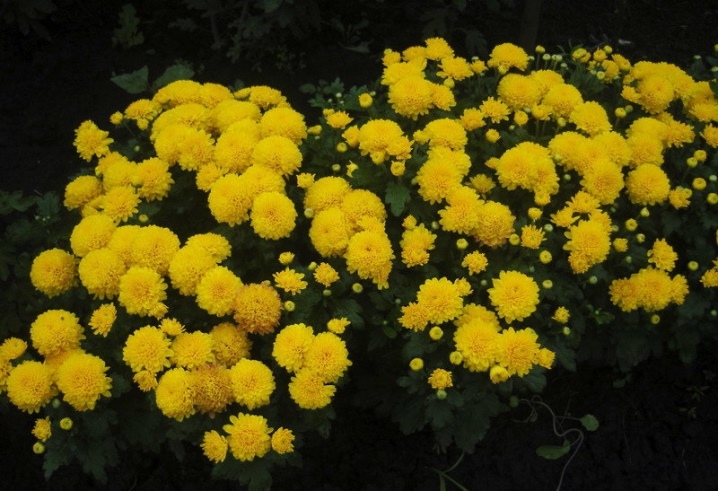
"Dune"
A small variety of chrysanthemum, reaching a height of 0.5 m and having a ball-like bush shape. Refers to early flowering varieties. The small-flowered variety has attractive decorative qualities.
Flowers tend to change color during the flowering season: at first they have a pure yellow color, towards the end they take on a dark bronze hue. The inflorescences consist of a large number of small flowers.
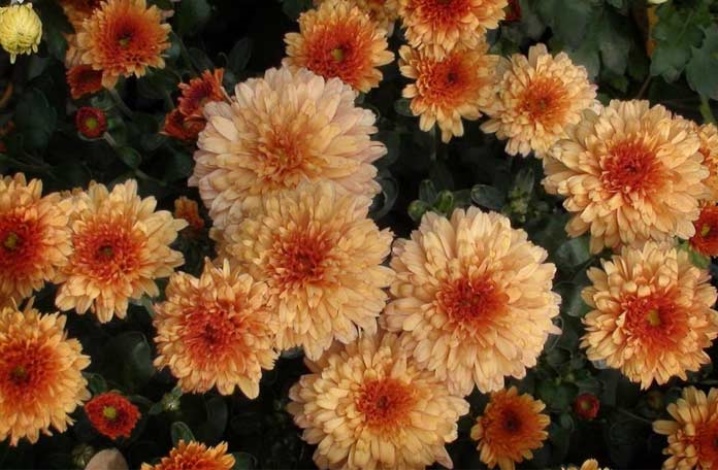
"Altyn Ai"
A Korean variety with strong stems and dark green, smooth foliage. A dense shrub in height does not exceed 60 cm, and in diameter - 50 cm.The plant blooms with double yellow flowers 8 cm in size. Flowering lasts 2 months and begins in the second half of August.
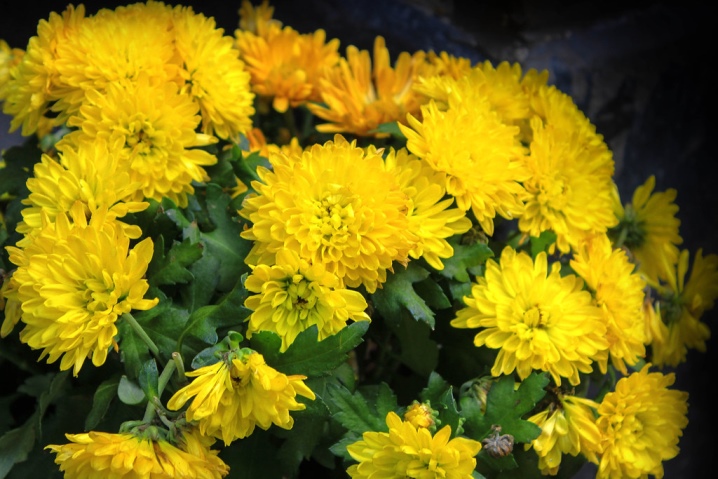
"Crowned"
A short, annual representative of chrysanthemums, barely reaches 40 cm. It has light yellow petals, which acquire a brighter color closer to the middle. Bushes of deep green color are studded with double or semi-double inflorescences. Each branch collects from 2 to 8 single baskets. The stems of the plant are juicy, fleshy, branched. Blooms from mid-summer to late September.
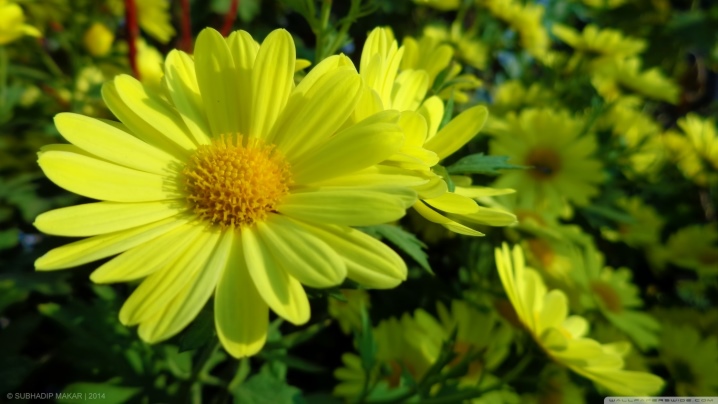
General rules for growing
Yellow chrysanthemum is a picky flower, so you can take care of it on a general basis. Growing will not cause difficulties and problems. The only drawback is that the plant does not like extreme cold. Therefore, you need to take care of the landing site in advance. The location of the flower should provide favorable living conditions.
In order for the chrysanthemum to please with gorgeous flowering every year, it is important to observe a number of conditions.
It is important to study the properties of the soil before planting. It should be nutrient-rich, breathable, and drainable to naturally remove excess moisture.

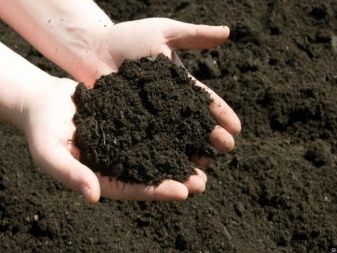
Chrysanthemum is a light-loving plant, but direct sunlight in the hot season can burn delicate petals. Therefore, when choosing a place for landing, this fact must be taken into account. An area with diffused lighting is great. Also in summer, when the air humidity is below 50%, the plant must be abundantly sprayed with water.
Chrysanthemum seedlings are planted in a pre-prepared trench at a distance of no more than 50 cm from each other. But it is also impossible to place it close - 30 cm of indentation is quite enough.
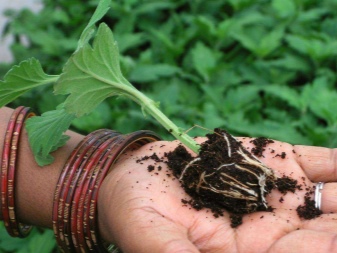
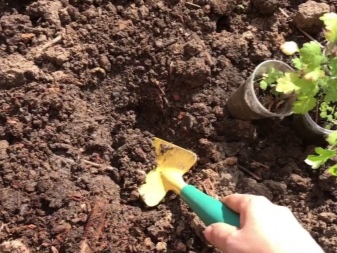
For the development of the root system and the strengthening of the plant, a biostimulating drug (such as "Kornevin") is used. The solution is diluted in the proportion: 1 g of the agent per 1 liter of water - and the soil is watered abundantly with it. Subsequent plucking of the plant will enhance the effect of Kornevin. To protect a young plant from adverse weather conditions, it is recommended to cover it with lutrasil (a special covering material).
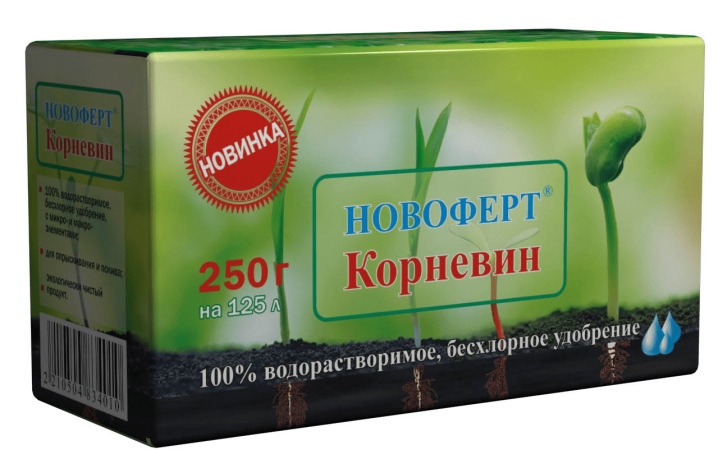
Despite its drought resistance, chrysanthemum needs watering periodically. Moistening the soil is carried out regularly, but in a little bit. If you overdo it, then rot can form on the roots.
As needed, the flower is fertilized, consisting of peat, humus and compost. And immediately after planting, the soil is fertilized with superphosphate.Approximately 2 weeks later, when the plant revives and gets stronger, the next stage of feeding the plant is carried out. For this, a mixture of potassium and phosphorus is used in a proportion of 45 grams to 25 grams.
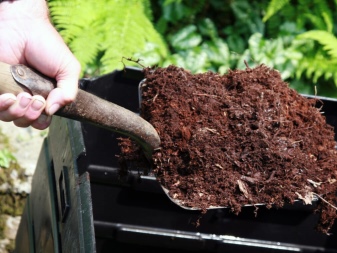

Sometimes it becomes necessary to transplant a plant, but this should be done once every 3 years. In this case, each time it is necessary to exercise increased caution in handling the roots so as not to accidentally injure them.
Each spring, it is necessary to prune the upper part of the shoots. If the yellow chrysanthemum is small-flowered, then instead of pruning, a pinch is used. This procedure is done to create a lush bush. Remove all buds, except for the main ones, cut off the lateral shoots.

Diseases and pests
Most often, the plant suffers from gray rot, rust and powdery mildew.
Gray rot - a type of fungus that infects leaves and stems with dark brown, and then gray spots. This leads to the death of the plant. The cause of the disease is high humidity.
Powdery mildew - looks like gray-white droplets of bloom on chrysanthemum leaves, which interferes with the full flowering of the plant. It appears for two reasons: either an increased nitrogen content in the earth, or a lack of potassium.
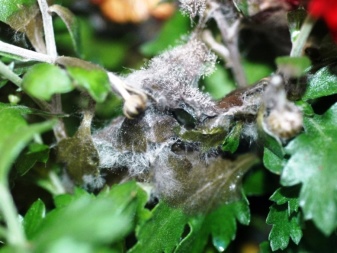
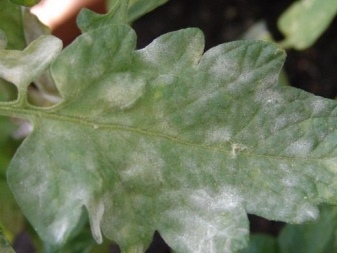
Rust on the leaves - This is also a mushroom that covers the leaves with small yellow spots. Then the area of distribution increases, and the yellow spots turn black. The destroyed leaves fall off, and the plant dies.
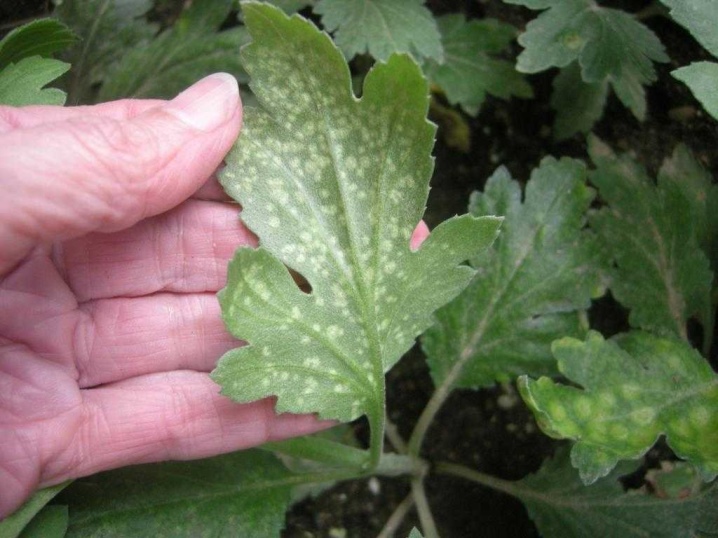
Of all types of pests, aphids, spider mites and chrysanthemum nematodes threaten the flower most of all.
Aphid affects the plant even before it blooms. The pest infects the buds of the plant, the tops of the shoots and young leaves, that is, the most "tasty" and juicy parts of the plant.
Spider mite Is not an insect, but an arachnid animal. It sucks out all the nutrients of the plant along with the sap. It is not easy to find due to its small size. But the pest leaves a trail in the form of a thin cobweb enveloping the plant, which makes the leaves change color and look lifeless.
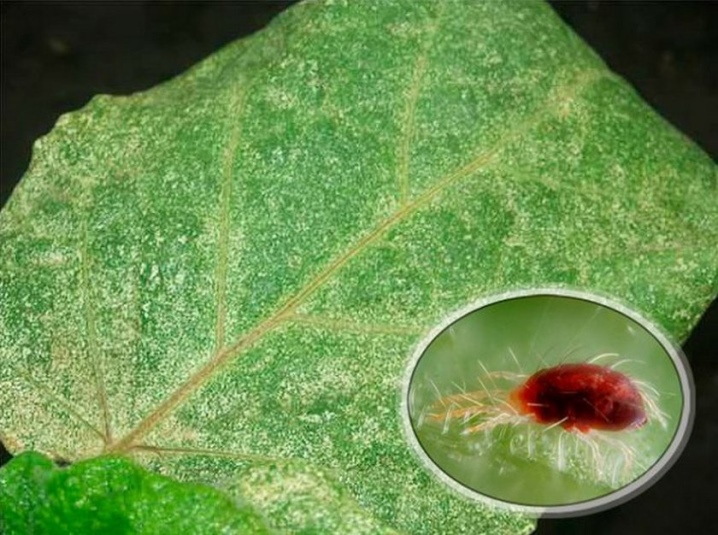
Nematode Are small and very thin worms that feed on chrysanthemum juice. They penetrate into the stems, leaves and develop there. The very first signs of a pest are dark, irregularly shaped spots on the leaves of the plant.
How to fight?
Treatment of yellow chrysanthemums is a simple process, especially if you notice a fungus or pest at an early stage of infection. Different methods are used depending on the cause of the disease.
Gray rot can be eliminated with antifungal drugs: Fundazol 0.1%, Rovral 0.15%, Ronilan 0.15% and Sumileks 0.1%.
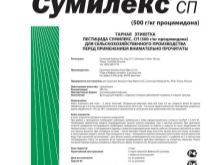
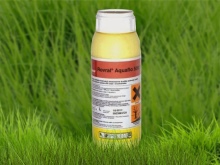
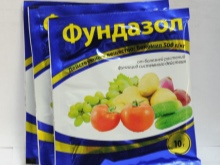
Powdery mildew can be eliminated without even resorting to pesticides. The plant can be cured if it is systematically watered, provide access to sunlight and good air exchange in the soil.
Rust will no longer bother you if you fertilize the soil with phosphorus and potassium. The parts of the plant damaged by the disease are removed and burned, and the plant itself is abundantly treated with colloidal sulfur.

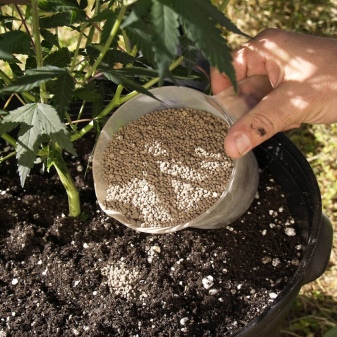
Ultraviolet light is harmful to spider mites. It is enough to irradiate the bush for 3 minutes every day for a week, and the tick will disappear.
To prevent re-infection, once a week, each flower leaf is treated with 96% alcohol.
Heat treatment will help in the fight against the nematode. Pre-diseased leaves are removed and destroyed. The water temperature should be approximately + 45 ° C. In some cases, it is not possible to eliminate the pest. In this case, it is recommended to destroy the entire plant and the soil around it, otherwise neighboring plants may become infected.
In addition to the described methods of combating parasites, alternative treatment options are used. For example, watering the plant with a decoction of onion peels can eliminate aphids.
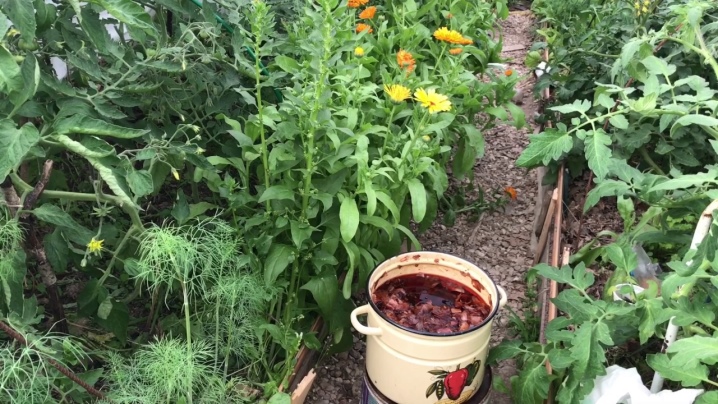
Examples in landscape design
Yellow chrysanthemum has a wide color palette: from pale yellow to golden with a reddish tint.Landscape designers often use this representative of the plant to decorate lawns, banks of reservoirs, brick walls. It is a wonderful decoration for summer cottages, flower beds in front of buildings and flower beds in city parks.
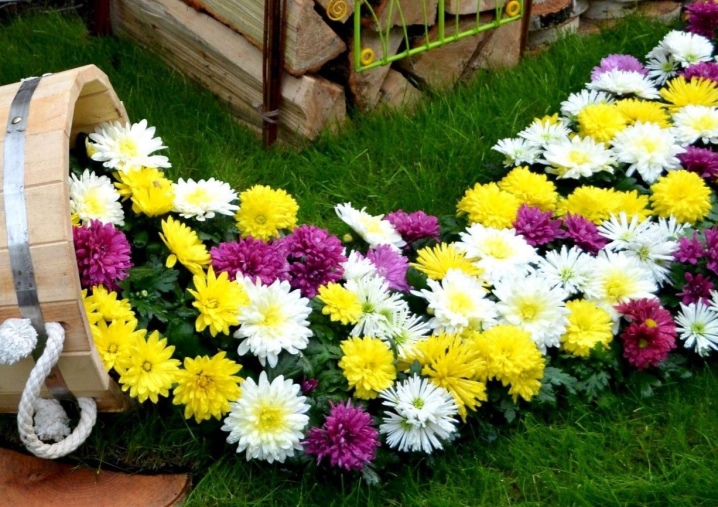
The variety of varieties allows you to create incredible, unique compositions. The flower is in perfect harmony with ivy, heather, astilba, aster, lemongrass, dahlias and cereals. At the same time, a flower garden consisting exclusively of chrysanthemum varieties will look colorful and original. Such a site, due to the different flowering period, will look elegant from mid-summer to late autumn.
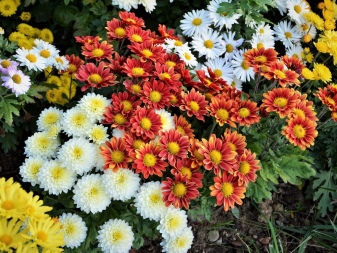
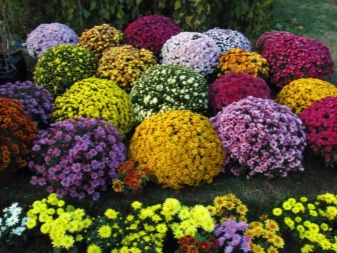
Often, gardeners combine the queen of autumn with fruit trees and shrubs. Apple tree, gooseberry, raspberry, sea buckthorn, barberry harmoniously coexist with it.

Such a multi-level composition saturated with colors will give the site a spectacular image:
- small bushes are good in the form of a pot arrangement;
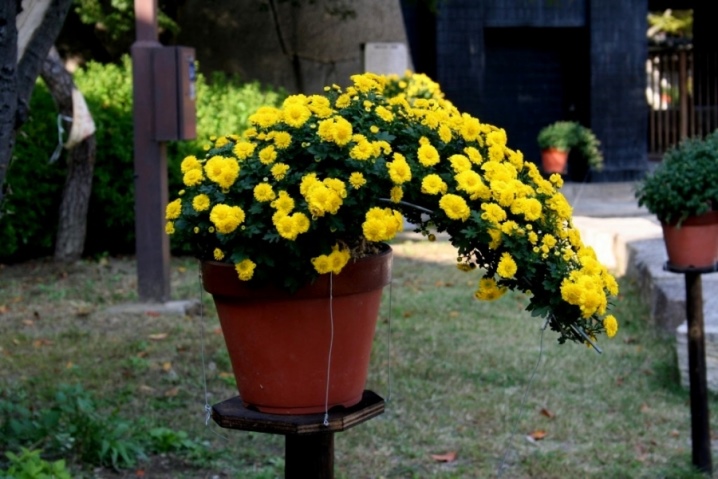
- golden chrysanthemums go well with any decorative leaves;
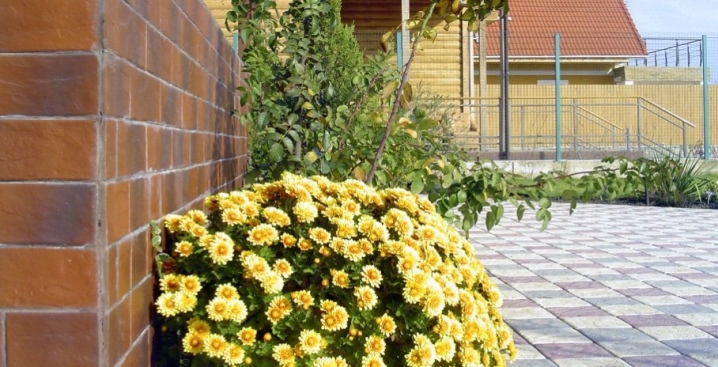
- it is possible to design with low-growing varieties of paths and other decorative elements and areas of the site;
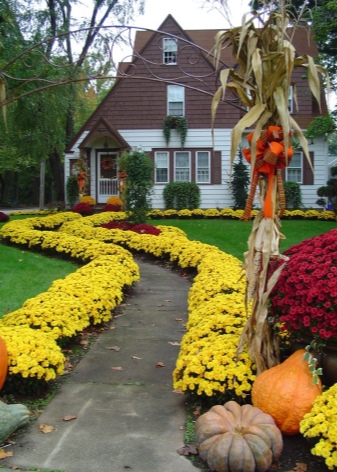
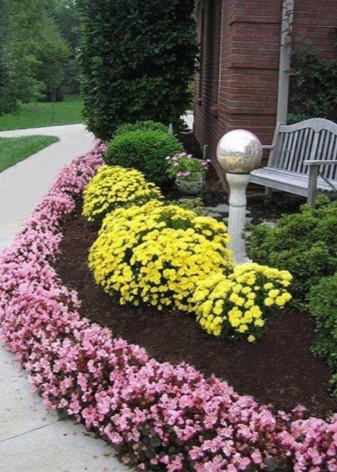
- spherical bushes are a self-sufficient decorative element;
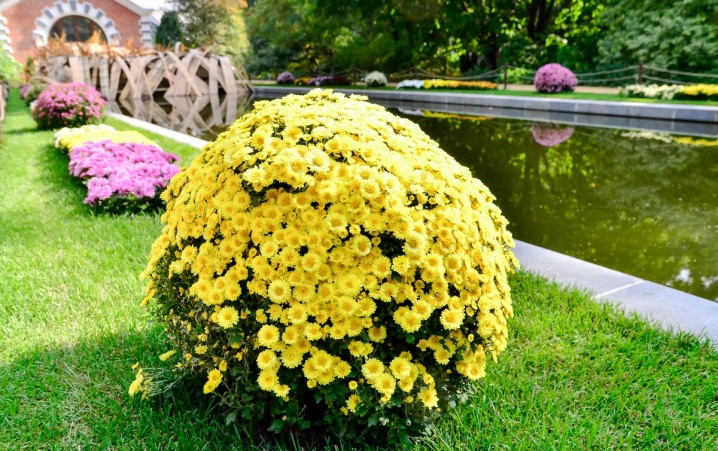
- placers of golden chrysanthemums are perfectly combined with varieties of other colors.
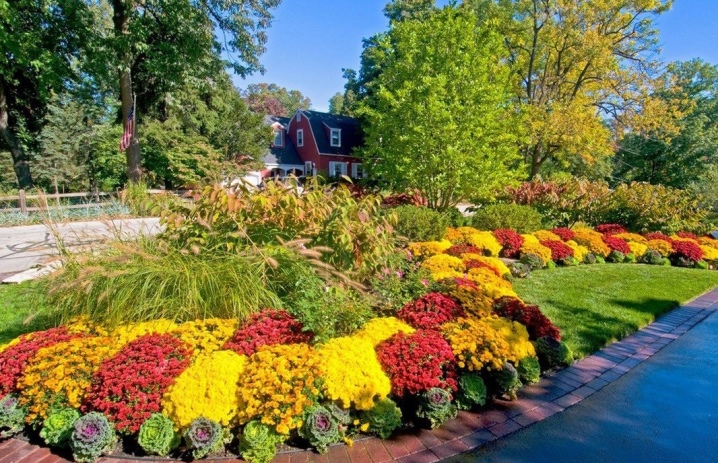
The secret of growing chrysanthemums in the video.







































































































The comment was sent successfully.